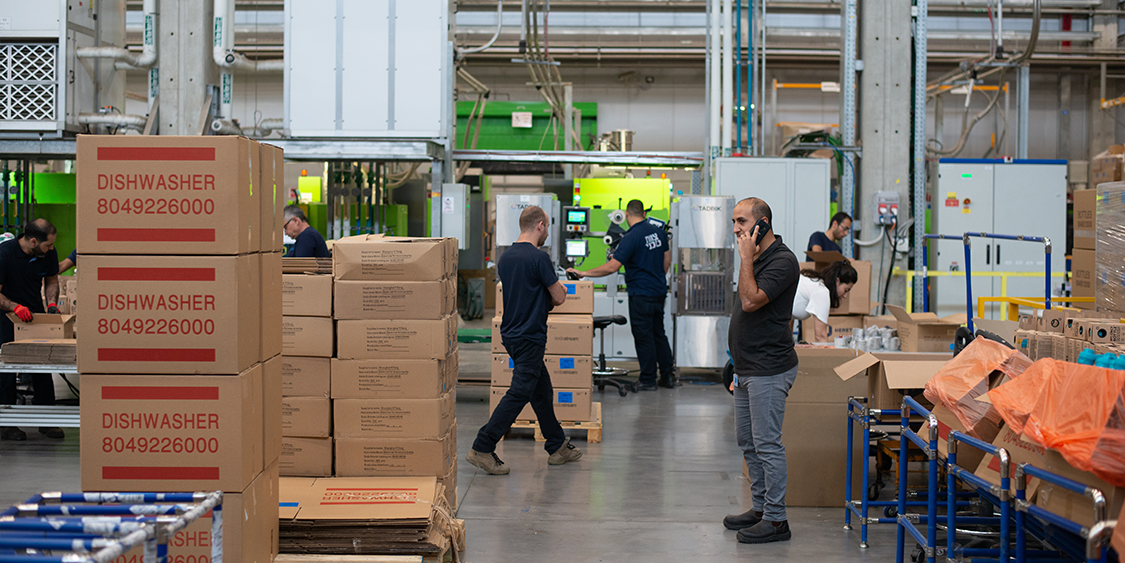
Warehouses are vital, but they can also be dangerous—because they are a centre of activity with a flurry of circulating goods and moving vehicles, they usually have a higher potential for accidents than other areas with more limited functions.
Improving warehouse safety can have a positive effect, streamlining your entire organization. To have a safe, productive warehouse, take a look at how to reduce the following causes of accidents in warehousing and storage:
Slips and Trips:
The main cause of slips is a wet or contaminated floor. In warehouses, things like water, oil, cleaning products, dry powders and food can all make the floor more slippery.
You can eliminate a significant portion of your warehouse’s slip risk by maintaining your equipment, since properly maintained equipment will not leak onto the floor. If your floor becomes contaminated, establish a policy that requires employees to clean immediately after noticing contamination.
Trip hazards are more obvious. Objects on the floor, uneven surfaces or other trip hazards are usually easier to spot than slip hazards. Like slips, trips can be greatly minimized with diligent housekeeping.
Plan your workflows and storage to make sure nothing causes obstructions where people walk. Provide good lighting and check that floor surfaces are even inside and outside the building. If an item does fall onto a traffic route, clear it as soon as possible.
Manual Handling:
Employees in every industry, but especially the warehousing and storage industry, experience some kind of minor work-related aches and pains. For warehouse employees, lower back and neck pain can be a common side effect of daily work.
Improper manual handling techniques can exacerbate these daily ailments and cause severe, lasting injuries. That is why it is imperative to train your employees in safe manual handling.
Gauge your warehouse’s manual handling risks by undertaking a risk assessment for all operations and tasks that present a risk of injury due to manual handling. Consider the following when assessing your warehouse’s manual handling risk:
- The task
- The load
- The working environment
- The individual’s capacity
The preceding factors will help you determine whether a manual handling task is risky. If there is a manual handling risk, always try to avoid the task first. If you cannot avoid the task, devise a system to shrink your risk, such as redesigning tasks so goods are not moved manually or using mechanical handling devices.
Work at Height:
Falls from height can cause extreme, life-altering injuries. For this reason, work at height should be avoided at all costs.
However, avoiding work at height is practically impossible in a warehouse. Therefore, as an employer, it is your responsibility to ensure work at height is properly planned, appropriately supervised and safely accomplished.
One easy way to lower your work at height risk is to make sure employees use the right equipment. A risk assessment can identify the best equipment for each type of job. Employees should inspect the equipment used for work at height before and after every task to make sure it is safe.
Moving or Falling Objects:
Most warehouses store objects at height. While this maximizes space, it also raises the chance of workers being struck by falling objects.
If your warehouse has areas with an increased risk of an object falling and striking someone, make sure they are clearly indicated and that only authorized people are allowed to enter.
To help keep objects stationary, inspect pallets each time before use to make sure they are in good condition. Damaged pallets can lead to shifting loads and falling objects.
Find Out More:
A safe, efficient and orderly warehouse is crucial to business success. Warehouses are like the heart of a business—they are the central transfer point, storing and sending raw material or manufactured goods onward to distribution, thereby keeping the pulse of the business beating.
There are other risks and ways to manage the safety of a warehouse. Download a copy of our “Risk Insights: Working Safely in Warehouses” for an in-depth guide on how to better support and protect your business:


